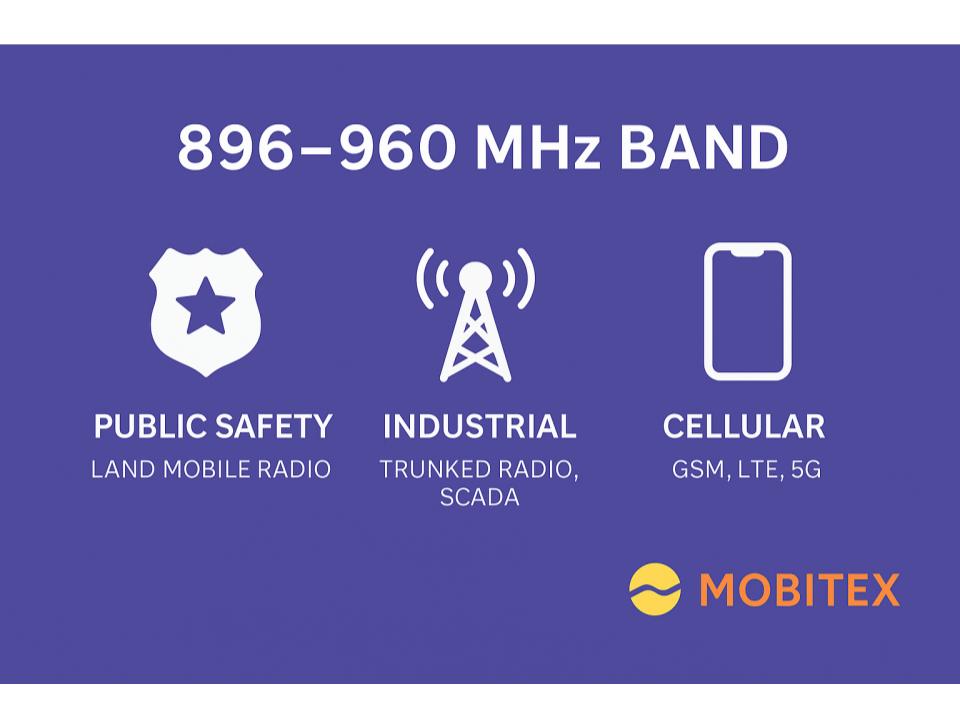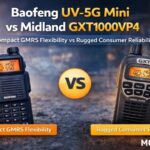The 896–960 MHz band bridges two major worlds of modern wireless communication: professional mobile radio and commercial cellular systems. Sitting right between land-mobile and ISM allocations, this band plays an important role in industrial, transportation, and telecom networks across all ITU regions.
🚨 Land Mobile Radio (LMR) and Trunked Systems
The 896–941 MHz range is heavily used for private and public trunked radio systems, supporting:
- Digital Mobile Radio (DMR) and NXDN networks for utilities, logistics, and transport fleets
- TETRA 900 MHz systems in Europe and Asia
- P25 Phase II networks in North America for public safety interoperability
Because of its strong propagation and limited interference, this band is ideal for reliable, wide-area voice and data coverage, critical for dispatch operations and industrial control.

📱 Cellular and Mobile Broadband Use
The upper segment, 890–960 MHz, evolved into one of the most widely deployed mobile blocks in history: the GSM 900 band.
- GSM 900 / EGSM 900 remains in use in most of Region 1 (Europe, Africa) and Region 3 (Asia-Pacific)
- Now being refarmed for UMTS Band 8, LTE Band 8, and 5G NR Band n8
These allocations deliver:
- Strong indoor and rural coverage due to low-frequency propagation
- Fewer base stations per square km compared with higher bands
- Compatibility with global roaming devices
🛰️ Typical Applications
| Application | Description |
|---|---|
| Public Safety & Government Radio | Secure digital trunked networks (TETRA, P25) |
| Industrial and Utility Communications | Field service coordination, SCADA telemetry |
| Cellular Networks | GSM 900 → LTE Band 8 → 5G n8 evolution |
| Rural Broadband and IoT | Extended LTE coverage for M2M and NB-IoT devices |
🌍 Regional Allocations
| ITU Region | Typical Usage |
|---|---|
| Region 1 (Europe / Africa) | GSM 900, TETRA 900, Public Safety LMR |
| Region 2 (Americas) | Private LMR (896–941 MHz), Trunked Radio |
| Region 3 (Asia-Pacific) | GSM 900, CDMA 900 (legacy), LTE Band 8 |
⚙️ Band Relationships
While 896–960 MHz itself is licensed, it lies just below several unlicensed ISM/SRD ranges:
- 863–870 MHz (Region 1) – Short-Range Device band (LoRa, Zigbee, RFID)
- 902–928 MHz (Region 2) – ISM band for IoT and low-power RF devices
This proximity requires strict filtering and coordination to prevent interference between industrial IoT deployments and licensed land-mobile or cellular networks.
🧭 In Summary
The 896–960 MHz band forms the foundation of both critical communications and commercial mobile networks.
It supports public safety, industrial, and cellular services, providing reliable, long-range connectivity worldwide.
Adjacent to regional ISM/SRD bands, it remains a vital, but carefully managed slice of spectrum bridging professional radio and next-generation LTE/5G infrastructure.

